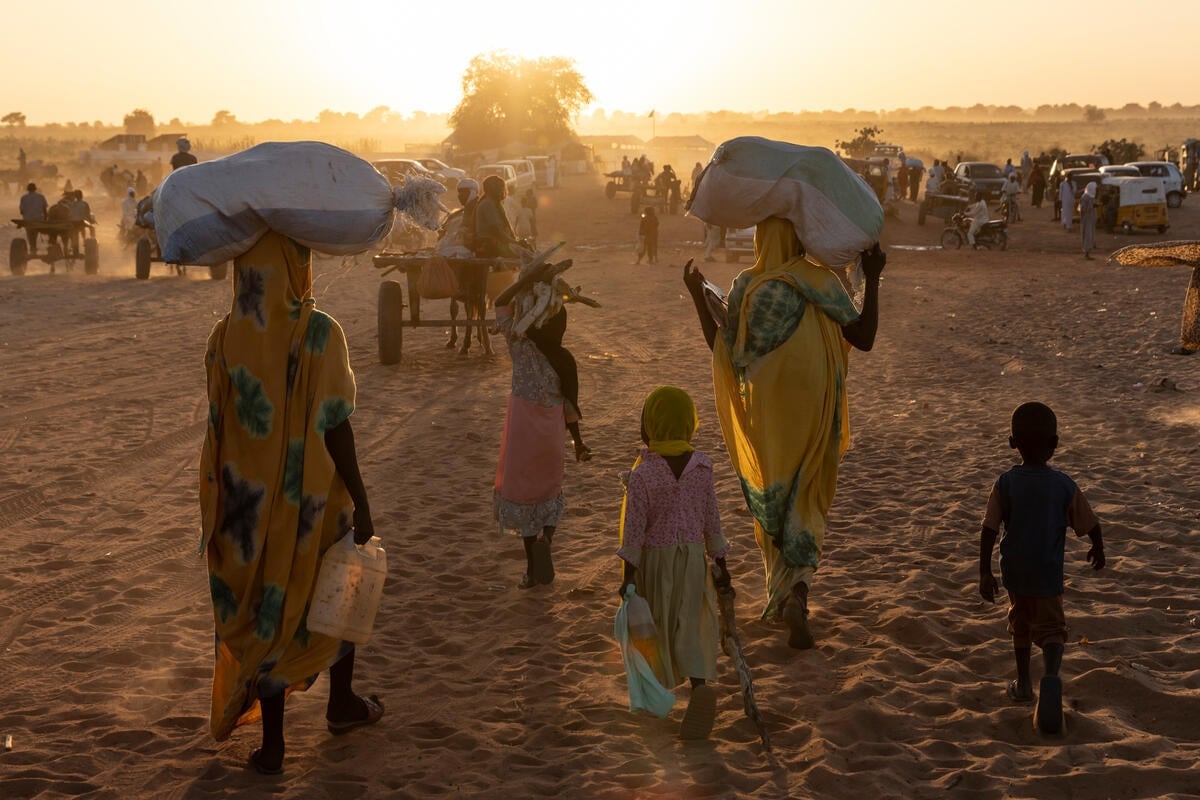Amid torrential rains UNHCR continues relocation of Sudanese refugees
Amid torrential rains UNHCR continues relocation of Sudanese refugees
UNHCR completed last week the relocation of a group of some 4,000 Sudanese refugees from Jammam refugee camp in South Sudan's Upper Nile State to Yusuf Batil camp some 52 kms away. The agency is set to launch more convoys this week to move another 15,000 refugees to the newly-established Gendrassa refugee camp.
A lack of potable water and worsening living conditions due to several massive influxes and torrential rains - which partly flooded Jammam camp - led the humanitarian community to organize the relocation of most of the refugees in Jammam to new sites. In addition to Yusuf Batil and Gendrassa camps, more contingency sites have been identified in Maban county should further movement or new arrivals require the opening of new camps. Several thousands are believed to be on their way to the border from Blue Nile, so far only a few hundreds have trickled in last week.
With Yusuf Batil reaching its maximum capacity of 34,500 refugees, water supply and hygiene promotion need to be stepped up. More water distribution points are being set up to increase daily water supply that is currently at about 13 litres per person per day. In the new Gendrassa camp set to receive new refugees in the coming days, two boreholes have been sunk and will initially be able to provide enough water for up to 10,000 people at 15 litres per day per person. A third borehole is being drilled.
We are continually concerned about the incidence of diseases, particularly bloody diarrhoea but also malaria and respiratory tract infections in the camps. Aid agencies are now expanding medical services as well as public health campaigns to ensure improved hygiene standards and early detection of disease in camps. Most of the recent arrivals reach the camps exhausted and weak. Malnutrition and mortality rates among children are extremely concerning. Wider nutrition programmes are being set up in all camps and more oral rehydration points are being set up. Cases of diarrhoea are also being closely monitored with samples regularly sent for laboratory testing. So far in July, some 400 cases of malaria have been reported in health centres in Doro and Yusuf Batil camps. UNHCR and other humanitarian actors are renewing the distribution of insecticide treated nets and key public areas are being sprayed.
Meanwhile, the number of refugees arriving in the nearby Unity State has dropped from 800 refugees per day in June to 250 people per day in July. Some 55,000 refugees still in Yida camp - close to the border - will remain there for the coming months as the area has been cut off by rains. Airlifts have now become the only viable means of access to the refugee site that can best be described as an "island". The hygiene and health situation in Yida remain of serious concern and humanitarian partners are deploying teams around the camp to disseminate hygiene and health messages and identify cases for immediate medical attention. A mortality survey is being conducted. Some 3/4 of the camp population have arrived in the last 3 months alone.
Upper Nile State is currently home to more than 100,000 refugees while Unity State hosts nearly 60,000. A verification exercise to ascertain the number of refugees is underway and will likely lead to adjustments to the estimates of the refugee population in the area.
For further information on this topic, please contact:
- In Nairobi (UNHCR regional hub): Millicent Mutuli on mobile + 251 735 337608
- In Juba: Mark Kirya on +211 922 407427 or +211 977 493000.
- In Geneva: Andrej Mahecic on mobile +41 79 200 7617









